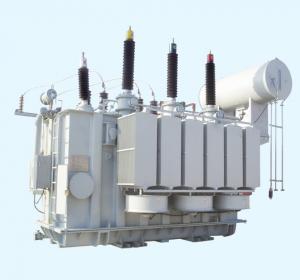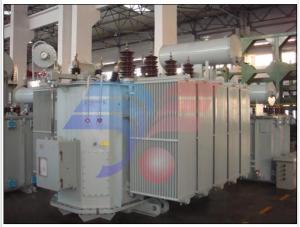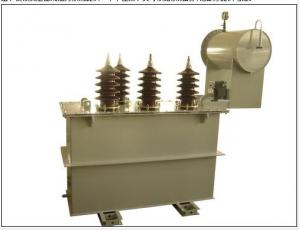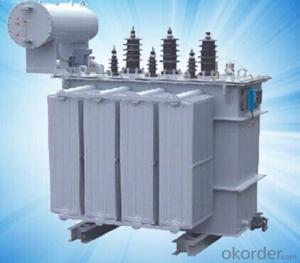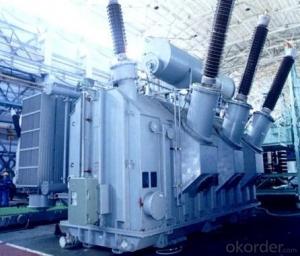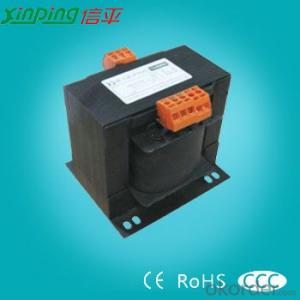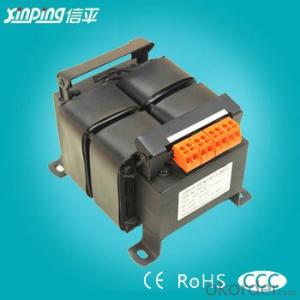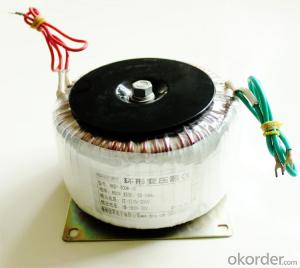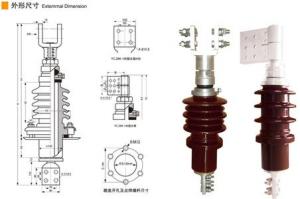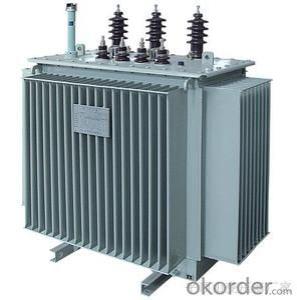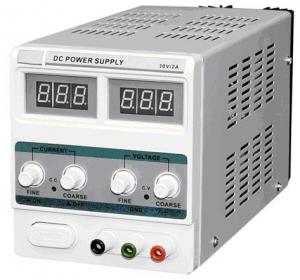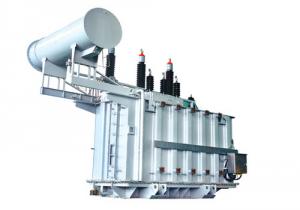JDXF-35 TA,TH GY W1,W2,W3 Voltage Transformer
- Loading Port:
- Shanghai
- Payment Terms:
- TT OR LC
- Min Order Qty:
- -
- Supply Capability:
- 1000sets set/month
OKorder Service Pledge
OKorder Financial Service
You Might Also Like
Type description 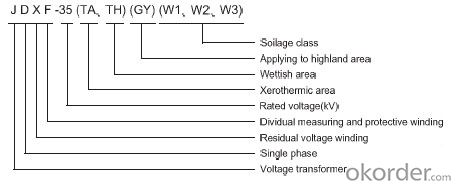
Technical characteristic
1.It accords to the GB1207-1997<voltage transformer> ,IEC186 and IEC60044.
2.This product has the character of limited tightness.All the tightness compartment do not be put into ultraviolet radiation so that we solve the problem of chap of tightness rubber and aging,these product is more reliable and has longer life,we ensure that it can run 20 years without leakage.
3.The porcelain is equipped with irragateing flange.the surface of flange use hot zincification to enhance the wholly mechnism of product and has beautiful outlook.
4.This product is equiped with bellow and is tightnesds completely.
5.With higher accuracy to 0.2,we can reach the requirment of customer with seperatly measuring secondary winding and protection winding.
6.With epoxy secondary terminal board,the product is enhanced secondary insulation and tightness.
7.All the standard comparthent are plated Dakelo.We ensure that the product don't rust for 20 years.
8.The inner structure of this product has changed largly and we solve the problem of old 35KV PT with unreasoned inner structure for the unpassed dielectric loss,This product has low partial discharge and litter dielectric loss with advanced workcraft.
9.The excitaton density of this product is equal or less than 0.7T and has the ability of avoiding ferro-resonance.
Technical Data
| Type | JDXF-35 | |
| Rated voltage | Primary winding | 35/ |
| Measuring winding | 0.1/ | |
| Protection winding | 0.1/ | |
| Residual voltage winding | 0.1 | |
| Frequency | 50HZ | |
| secondary accuracy and reated output | Measuring winding | 80VA 0.2 class |
| Protection winding | 150VA 0.5class 250VA 3P class | |
| Residual voltage winding | 100VA 6P class | |
| Rated limit output | 2000 | |
| Rated insulation level | 4.05/95/200 | |
| Creepage distance | 810,1050,1250 | |
| Flash distance | 410-500 | |
| Total weight/Oil weight | 40/190 | |
| Pack size | 580×600×1300 | |
JDXF-35 Voltage Transformer Outline Drawing
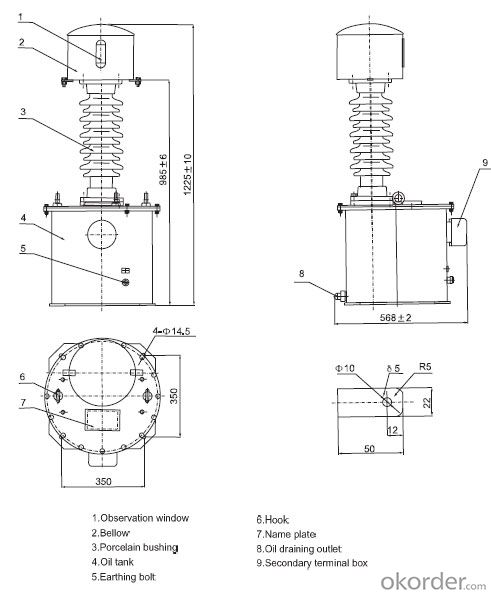
Srructure drawing
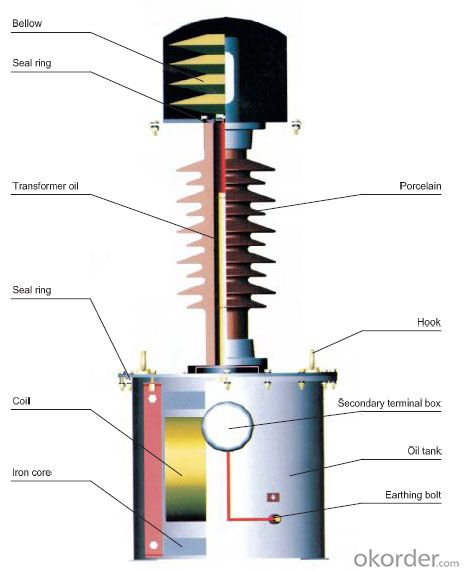
- Q: How do you test this transformer with a multi-test meter? It was in a gong style door bell system. The 'clanger' unit has two windings withe the striker arm parallel to the end of the windings. Elaborate please. parts are difficult at my location.
- Watts are not equal to VA. VA equals volts times amps, just as do Watts. However, Watts measures power, meaning volts and amps are in phase with each other. Doorbells are inductive, and transformers are inductive, meaning the current (amps) and the volts may not be in phase. That's why it's convenient to rate transformers in VA, because the manufacturer cannot know what load is going to be applied. Generally, watts used in a system will be less than VA, because watts equals VA times the phase angle.
- Q: Is the LTC transformer a regulated voltage transformer?
- If equipped with a load regulator is called on-load tap-changer If equipped with no load regulator is called no-load voltage regulator
- Q: For a project, I need a sine wave with an RMS amplitude of 1000 V at least.I have a function generator that only makes sine waves at most of 7 V RMS.I have a neon transformer w/ a 120 V primary and a 3,300 V secondary and a step down transformer w/ a 120 V primary and 16 V secondary, which is used backwards.Well, I can only get 585 V max. I decided to get some low power step down transformers (Hammond Mfg. 162 series) w/ dual primary and secondary windings. so I can try different combination of step up.I thought the smaller the core would be less of a load for the generator. I get 30 V out of the HVAC tran. (10 VA rating) when the big transformer is hooked up, but for a Hammond w/ a similar winding ratio and (1.1 VA) w/ a similar winding ratio, but I can only get like very little out of the big transformer when hooked up.Is there another factor. I read something about transformer impedance, I was thinking of doing a quick measurement of that on them.
- You are confusing VA (power ratings) with transformer ratios 120/16 7.5 :1 3300/120 27.5 : 1 So connect 7Vrms to 16 input to give output 1 52.5V Now connect this 120 (52.5V) output to the 120V input of the 120/3300 transformer The output should be approx 52.5 x 27.5 1444 Volts Use the 16/120 to step up and then the 120/3300 to step up again Take the function generator voltage to its lowest and measure at all points now gradually increase the generator voltage measuring at all points until you get what you want If the voltages are not as you expect then the VA ratings may be a problem Remember to be extra careful with High Voltages
- Q: A transformer rises the voltage in proportion of 1 to 10. If the power in the primary coil is 100 watts, we should expect a power of ____ watts in the secondary coil. a) 10b) 100c) 1,000
- As that of primary:100.
- Q: i would like to know how transformer tap changer operate to vary the output voltage. And also why is always connected to the high voltage side of the transformer.
- A transformer raises or lowers voltage based on the ratio of the number of coils of wire between the high and low voltage sides. The tap changer adjusts the voltage by changing the point of contact on one of the coils. Bypassing or including coils of wire changes the turns ratio of the transformer which by default will change the output voltage in direct proportion. Assuming you're referring to a tap changer under load Each step will either raise or lower the voltage by 5/8% or 3/4 volt on a 120 volt base. A reactor coil (yet a third smaller coil) is used during each step to temporarily carry the load so the contacts won't be damaged by arcing while switching. In other words, the lights won't blink during a tap change. A control panel constantly monitors the output voltage and automatically raises or lowers the voltage in an attempt to keep the output within its programmed bandwidth. Depending on the design, the tap changer may or may not be on the high voltage side.
- Q: Hello, I am using a spark transmitting system that will throw about 40KV at about 5MA. I need to step this way down. What rating should I look for? If a current transformer isn't the way to go, please tell me what I should doThanks in advance
- Current transformer coupling the 40kv line then produce about a few hundred volts depending on how many turns existed in the current transmitter. It needs many such transformers to do different step down. If you require over 5kv per step,current transformer coupling might not be the best way. The better way is control the high voltage 40kv source.Vary the supply source shall do.
- Q: A stepdown transformer is used for recharging the batteries of portable devices such as tape players. the turns ratio inside the transformer is 13:1 and it is used with 120 V rms household service. if a particular ideal transformer draws 0.350 A from the house outlet, what are the voltage and the current supplied to a tape player from the transformer. How much power is delivered?
- The tape player receives an output of 120/139.2V rms from the transformer. The tape player's current draw on the transformer is 2.6mA or 0.026A. Your power usage is 10.04Wh or .01kWh.
- Q: Transformer and the middle of what is the difference
- Often referred to as the transformer is the frequency transformer, is used to change the size of the AC voltage electrical equipment. It is based on the principle of electromagnetic induction, with the same frequency, between two or more windings, the exchange of AC voltage and current to transmit electrical energy of the static electrical equipment. In the week is the IF transformer or inductance coil, is a fixed resonant circuit with a transformer, the resonant circuit can be fine-tuning within a certain range, so that access to the circuit can achieve a stable resonant frequency. Transformer (Transformer) is the use of electromagnetic induction principle to change the AC voltage of the device, the main components are primary coil, secondary coil and core (core). The main functions are: voltage conversion, current conversion, impedance conversion, isolation, voltage regulator (magnetic saturation transformer) and so on. According to the purpose can be divided into: power transformers and special transformers (electric furnace change, rectifier, frequency test transformer, voltage regulator, mine transformer, audio transformers, IF transformers, high-frequency transformers, impact transformers, instrument transformers, electronic transformers , Reactors, transformers, etc.). Circuit symbols commonly used as the beginning of the number. Example: T01, T201 and so on.
- Q: 630kva dry-type transformer rated current is how much
- Hello there: - ★ 1, the transformer current calculation formula is: transformer capacity ÷ (rated voltage × root number 3) - ★ 2,630kva transformer primary current: 630kva ÷ (10kv × 1.732) = 36.37A; - ★ 3,630kva transformer secondary current is: 630kva ÷ (0.4kv × 1.732) = 909A.
- Q: a lamp is connected to a secondary coil ( 80 turns) of a transformer by long leads which have a resistance of 2.5 ohms. Primary coil( 1600 turns voltage is 220v). the power input to the primary coil is 44w. 1) what is the voltage across the secondary coil2) what is the current across the secondary coil3) what is the electrical power dissipated in the lamp
- Assuming perfect transformer. turns ratio 1600/80 20:1 secondary voltage is 220/20 11 volts primary current is 44/220 0.2 amps secondary current is 0.2 x 20 4 amps drop across wires is 4 x 2.5 10 volts. This assumes the 2.5 ohm number is for both leads, not each. voltage across lamp is 11v – 10v 1 volt power in lamp is 1 v x 4 a 4 watts. .
Send your message to us
JDXF-35 TA,TH GY W1,W2,W3 Voltage Transformer
- Loading Port:
- Shanghai
- Payment Terms:
- TT OR LC
- Min Order Qty:
- -
- Supply Capability:
- 1000sets set/month
OKorder Service Pledge
OKorder Financial Service
Similar products
Hot products
Hot Searches
Related keywords
